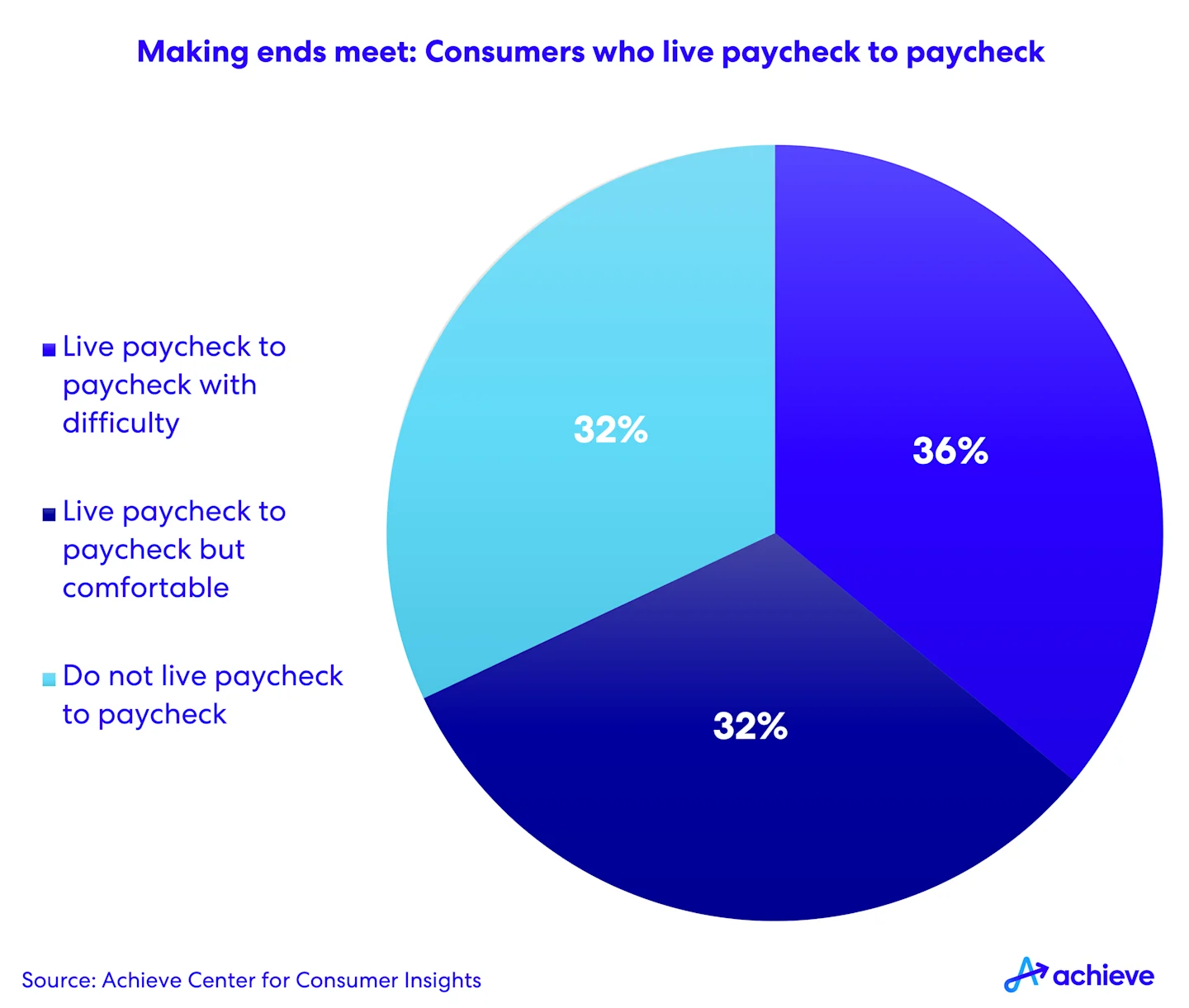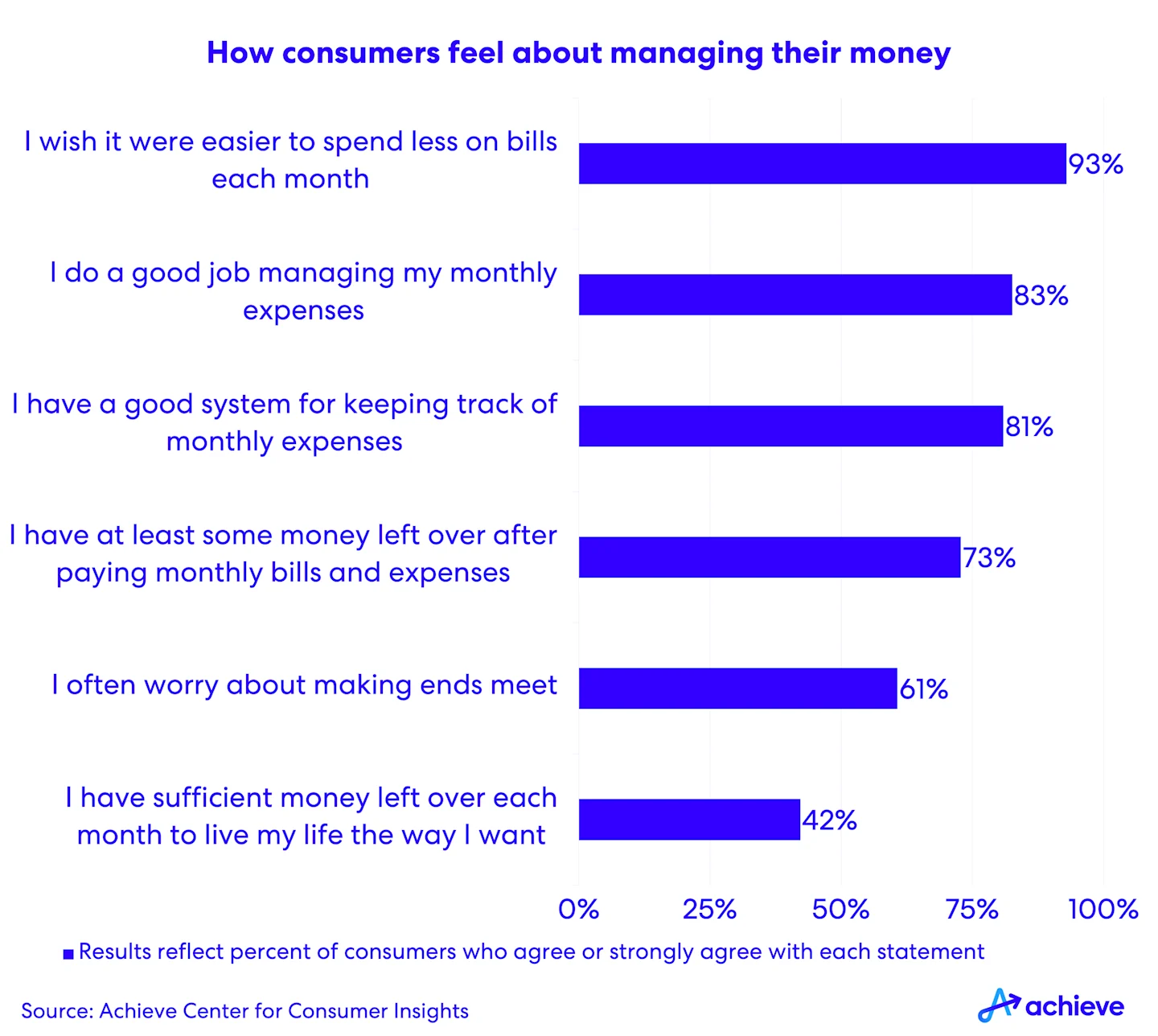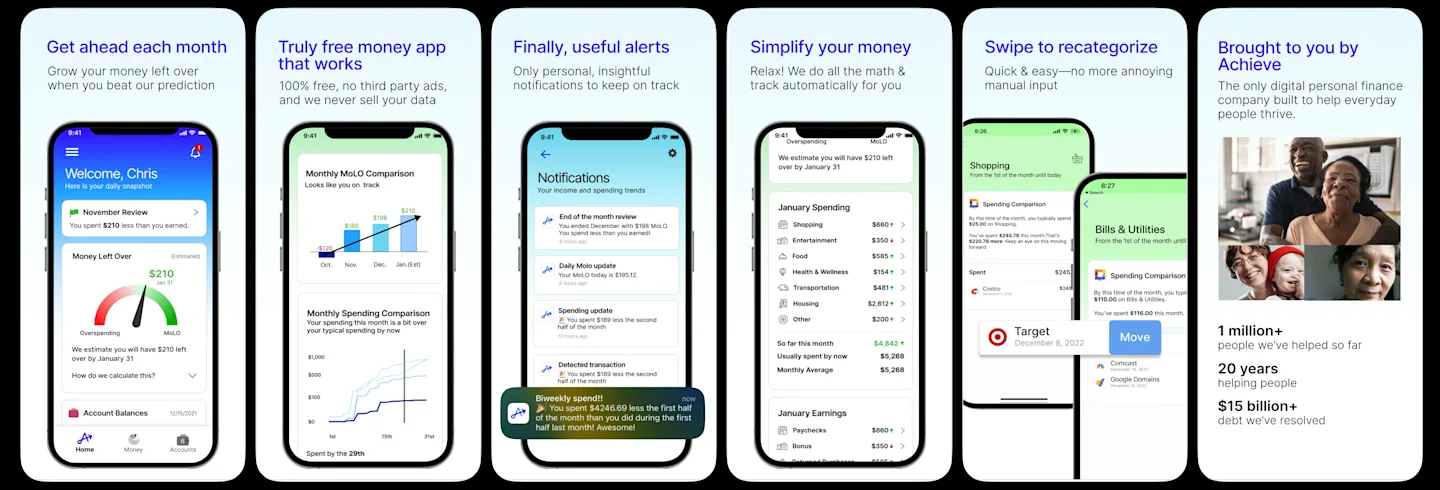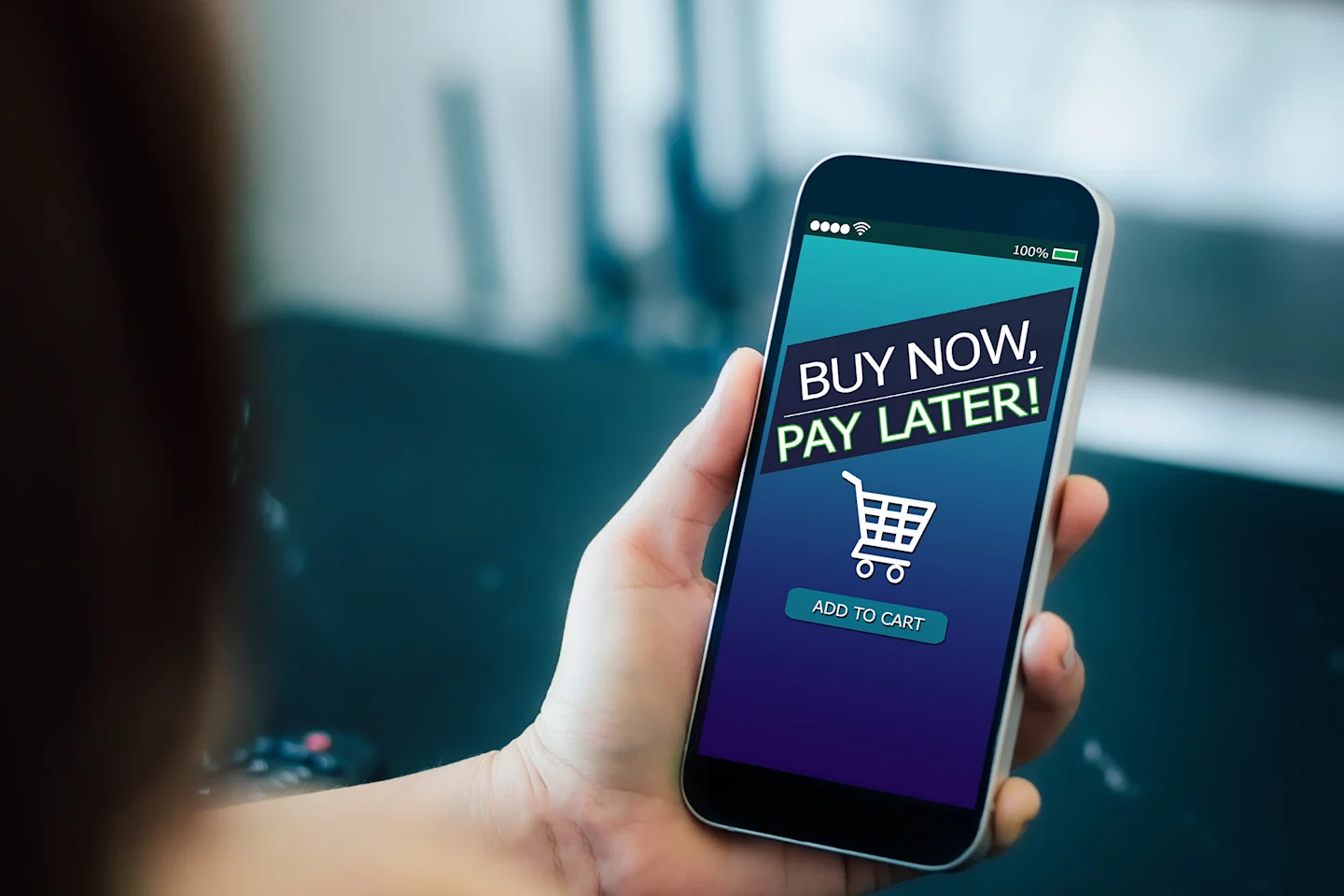
At Achieve, we're committed to providing you with the most accurate, relevant and helpful financial information. While some of our content may include references to products or services we offer, our editorial integrity ensures that our experts’ opinions aren’t influenced by compensation.
Achieve Insights
77% of consumers say smartphones make managing money easier, but many still struggle to make ends meet
May 11, 2023
Written by
With financial volatility on the rise, it’s time to rethink how people use mobile apps to manage their money
Smartphones have become an essential tool for all facets of life. For many, they’ve replaced the home computer as the primary digital device we use to communicate, keep our home and work lives organized and manage our personal and household finances.
Our recent survey of U.S. consumers found that 77% of Americans believe that smartphones and mobile apps make it easier to manage their finances. Meanwhile, 67% of consumers surveyed say they want to use their smartphone to manage their money, while 63% primarily access their financial accounts using their smartphone. When broken down by generation, these trends are even more pronounced, with the overwhelming majority of Generation Z and Millennials relying on their smartphones to manage their finances.

But as consumers increasingly feel the strain of rising inflation and higher interest rates, keeping track of spending and planning future expenses is becoming more challenging. Our survey found that 68% of Americans are living paycheck to paycheck, either comfortably or with some difficulty. That figure is even higher among households making $50,000 or less per year, where 76% say they live paycheck to paycheck. Perhaps more surprising is that even among households making over $100,000 per year, 34% say they’re spending as much as they earn, with very little left over after paying their monthly expenses.
Living paycheck to paycheck puts consumers in a vulnerable position, because they are unable to save for emergencies or put funds aside to pay for their long-term goals.

What’s more, 34% of survey respondents say they have less money left over after paying their bills each month than they did a year ago, while only 15% say they have more money at the end of the month than they did last year. It’s no wonder 61% of those surveyed say they often worry about making ends meet and a whopping 93% wish it was easier to spend less on bills each month.

This kind of financial volatility can have serious consequences. One-in-three survey respondents say they have overdrafted their primary bank account in the past year, including 21% who overdrafted more than once. The reasons for falling behind vary, from difficulty tracking spending and when deposits get credited to accounts to unexpected fees and expenses. These overdrafts often result in costly fees or having a debit card declined when trying to make a purchase. This may be why 42% of consumers say they need help anticipating how much money they’ll have at the end of the month.
At Achieve, we believe that the foundational step in taking control of your financial future is making sure you have money left over every month — for saving, paying down debts or even to afford the occasional indulgence. That’s why we built our new mobile app, MoLO.
MoLO — short for “Money Left Over” — connects the dots between your spending habits and expected income to predict whether you’ll be ahead or behind for the month. You can challenge yourself to beat our MoLO estimate of how much you’ll have left at the end of the month in order to save even more money and meet your financial goals. Over time, you can build your money momentum and develop new savings habits and meet your financial goals.

To get started, you simply connect accounts like your bank accounts, credit and prepaid cards, loans and other accounts to MoLO. The app automatically organizes your spending across different categories. MoLO can even identify essential and nonessential spending to simplify your finances and give you greater insight into where you money goes each month.
How is MoLO different? MoLO’s goal is to help you spend less. Achieve’s survey revealed that 71% of respondents believe money apps put too much focus on ads and offers for new financial accounts. People are tired of money apps that seem more interested in using your personal data to serve up targeted ads than actually helping you gain control of your finances. With MoLO, you never have to worry about that, because the app is 100% free and has no ads. Achieve doesn’t sell your data and all your information is protected using bank-level security.
The data and findings presented are based on an Achieve survey conducted in April 2023 consisting of 1,000 U.S. consumers ages 18 and older and is representative of Census Bureau benchmarks of the U.S. population for age, gender, race and ethnicity.
Author Information
Written by
Analyst, Achieve Center for Consumer Insights
Related Articles
Americans in their 20s and 30s are becoming seriously delinquent on their credit cards at a faster pace than before the pandemic and approaching levels not seen since the Great Recession.
On the surface, the premise of Buy Now, Pay Later is simple and appealing. But borrowers who can’t afford to repay their BNPL loans risk getting hit with late fees, falling behind on other financial obligations, damaging their credit and other challenges.
Household debt is at record levels and all that borrowing is taking a toll on Americans’ mental and physical health.


